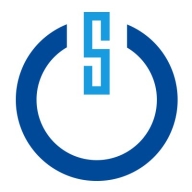

DNIF HYPERCLOUD and CRITICALSTART are competing cybersecurity solutions in the enterprise security sector. CRITICALSTART displays an advantage in features offering stronger support with sophisticated capabilities.
Features: DNIF HYPERCLOUD provides strong anomaly detection, advanced threat intelligence, and automated response capabilities. CRITICALSTART includes proactive threat management, comprehensive analytics, and powerful incident response tools.
Room for Improvement: DNIF HYPERCLOUD could enhance its feature set depth and improve real-time response efficacy. CRITICALSTART may need to streamline user experience and optimize feature integrations. DNIF HYPERCLOUD's user interface could use more intuitive design, while CRITICALSTART might benefit from enhanced deployment simplicity.
Ease of Deployment and Customer Service: DNIF HYPERCLOUD is noted for a simple deployment, requiring minimal technical intervention, making it ideal for organizations needing quick deployment. CRITICALSTART, while offering a more complex deployment, backs its solution with superior customer service and extensive support and training resources.
Pricing and ROI: DNIF HYPERCLOUD is positioned as cost-effective, providing a strong ROI with lower upfront costs. CRITICALSTART, although requiring higher initial investment, offers significant long-term value with extensive features and threat management efficiency, thereby providing a commendable ROI.

The cybersecurity landscape is growing more complex by the day with the arrival of new threats and new tools supposedly designed for combating them. The problem is it’s all creating more noise and confusion for security professionals to sort through.
CRITICALSTART is the only MDR provider committed to eliminating acceptable risk and leaving nothing to chance. They believe that companies should never have to settle for “good enough.” Their award-winning portfolio includes end-to-end Professional Services and Managed Detection and Response (MDR). CRITICALSTART MDR puts a stop to alert fatigue by leveraging the Zero Trust Analytics Platform (ZTAP) plus the industry-leading Trusted Behavior Registry, which eliminates false positives at scale by resolving known-good behaviors. Driven by 24x7x365 human-led, end-to-end monitoring, investigation and remediation of alerts, their on-the-go threat detection and response capabilities are enabled via a fully interactive MOBILESOC app.
DNIF HYPERCLOUD is a cloud native platform that brings the functionality of SIEM, UEBA and SOAR into a single continuous workflow to solve cybersecurity challenges at scale. DNIF HYPERCLOUD is the flagship SaaS platform from NETMONASTERY that delivers key detection functionality using big data analytics and machine learning. NETMONASTERY aims to deliver a platform that helps customers in ingesting machine data and automatically identify anomalies in these data streams using machine learning and outlier detection algorithms. The objective is to make it easy for untrained engineers and analysts to use the platform and extract benefit reliably and efficiently.
We monitor all Security Orchestration Automation and Response (SOAR) reviews to prevent fraudulent reviews and keep review quality high. We do not post reviews by company employees or direct competitors. We validate each review for authenticity via cross-reference with LinkedIn, and personal follow-up with the reviewer when necessary.